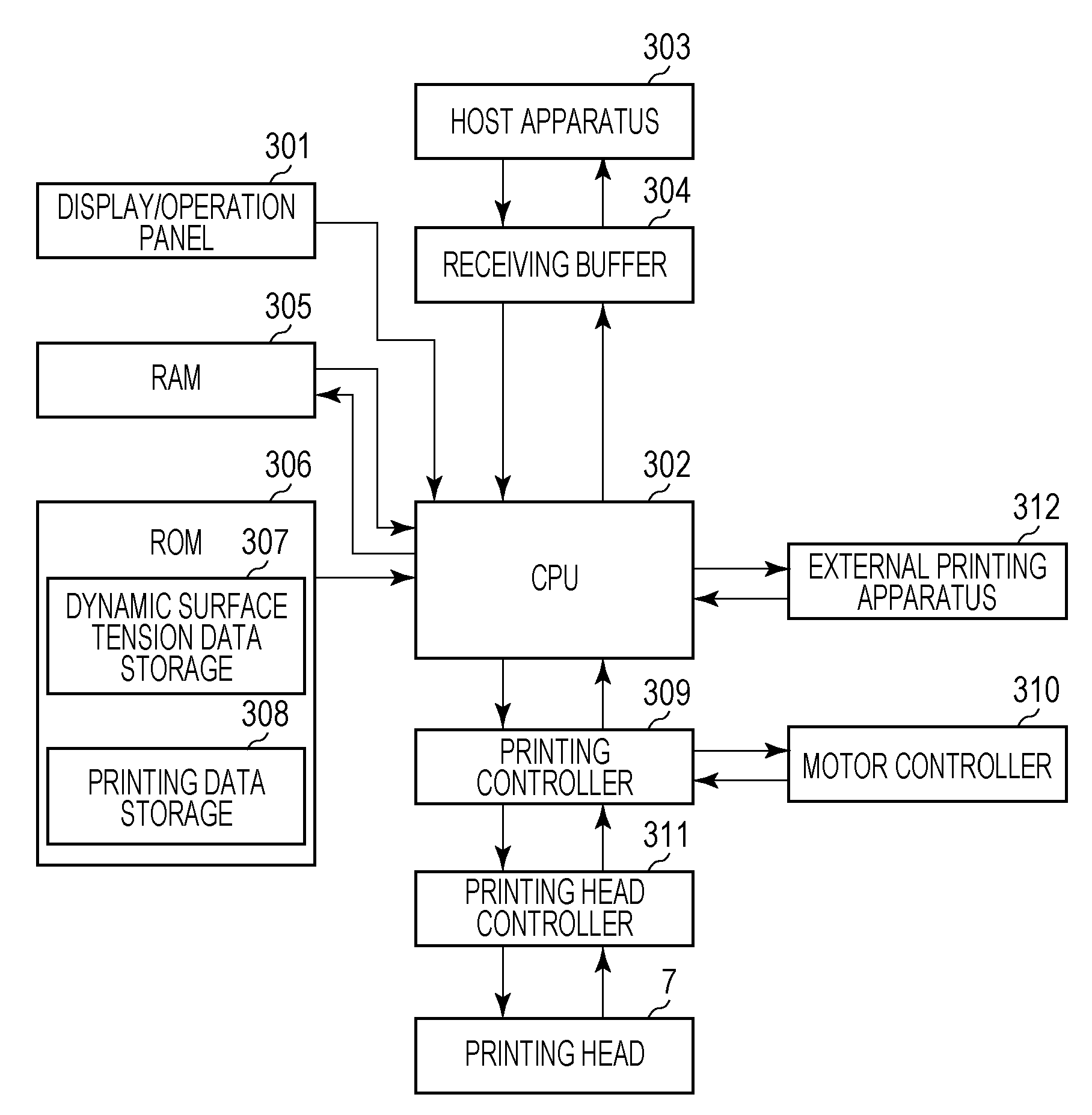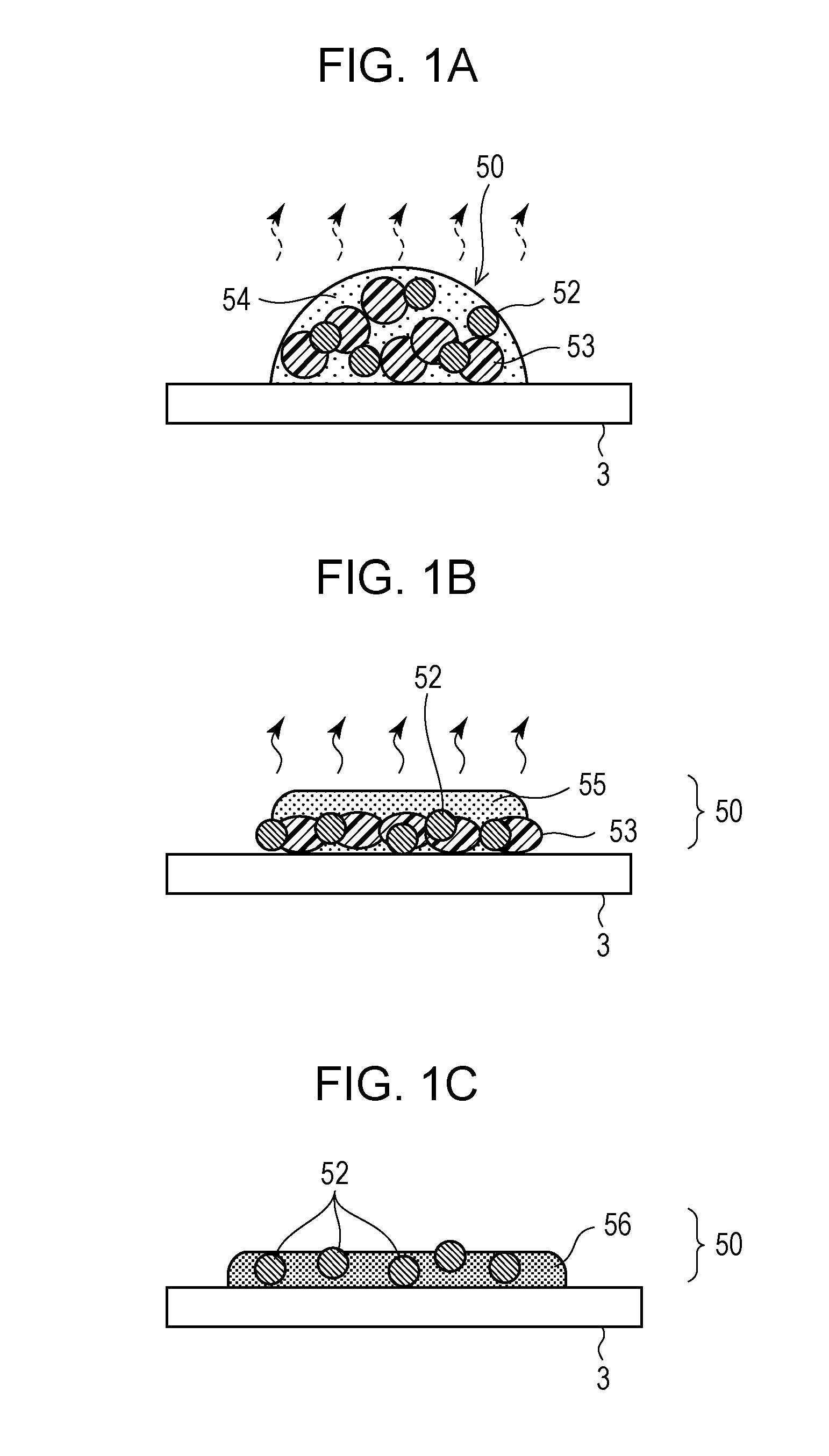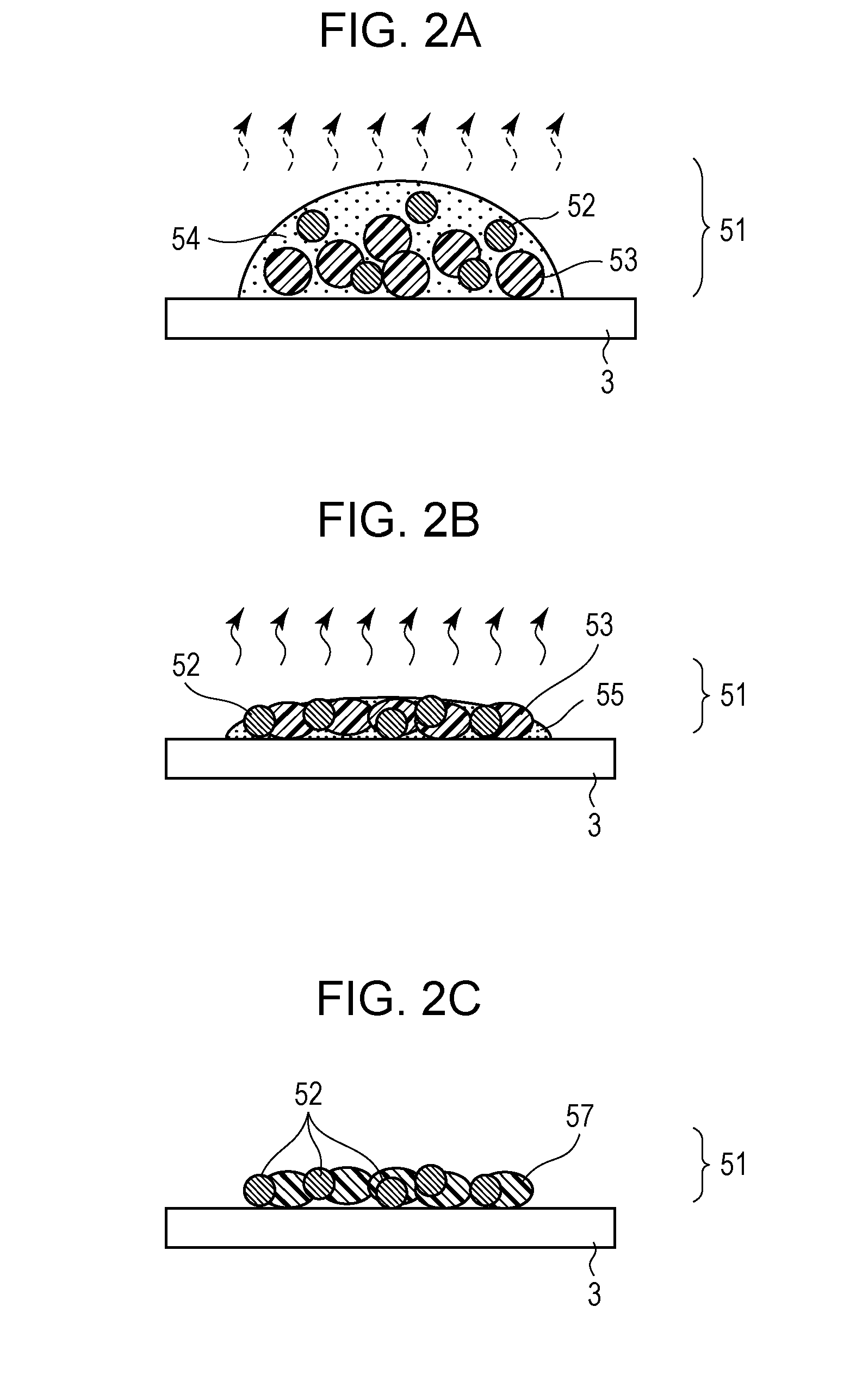Image processing apparatus, image processing method and image printing apparatus
a technology of image printing and image processing, which is applied in the field of image printing apparatus, can solve the problems of insufficient low rub fastness of the ink layer, and inability to produce images with a desired rub fastness in some cases, so as to reduce the dynamic surface tension, increase the graininess of the image, and reduce the rub fastness of the resulting image
- Summary
- Abstract
- Description
- Claims
- Application Information
AI Technical Summary
Benefits of technology
Problems solved by technology
Method used
Image
Examples
first embodiment
[0039]A first embodiment of the invention will now be described in detail.
[0040]FIG. 3 is a perspective view in partial interior of an image printing apparatus 1000 according to the present embodiment.
[0041]FIG. 4 is a schematic side view in partial interior of the image printing apparatus 1000 of the present embodiment.
[0042]The image printing apparatus 1000 contains a housing 1 and a platen 2 above the housing 1. The platen 2 has a plurality of suction holes 34 that suck a printing medium 3 to keep the medium from floating. The suction holes 34 communicate with a duct 4. The printing medium 3 is sucked to the platen 2 by the operation of a suction fan 36 disposed under the duct 4.
[0043]A carriage 6 is held for reciprocal movement in directions parallel to the X direction (scanning direction) by a main rail 5 extending along the longitudinal direction of the housing 1. The carriage 6 contains an ink jet printing head 7. The ink jet printing technique applied to the printing head 7 ...
second embodiment
[0155]The first embodiment has described a technique in which inks having relatively low dynamic surface tensions are ejected in all the scanning operations.
[0156]In the second embodiment, an ink having a relatively low dynamic surface tension is not ejected in a specific one of all the scanning operations performed on a unit region. In the following description, only ink ejection opening line 22K for the black ink and ink ejection opening line 22M for the magenta ink will be described below for the sake of simplicity.
[0157]The description of the same operations as in the first embodiment will be omitted.
[0158]In the present embodiment, an image formation in a unit region 80 on a printing medium is completed by 8 print scanning operations. The printing head 7 used in the present embodiment includes ejection opening line 22K having ejection openings through which a black ink is ejected, and ejection opening line 22M having ejection openings through which a magenta ink is ejected. In ...
third embodiment
[0168]In the first and the second embodiment, mask patterns having different dot connectivities are used according to the dynamic surface tension.
[0169]In a third embodiment, mask patterns having different dot connectivities are used according to not only the dynamic surface tension, but also the amount of ink ejected.
[0170]The description of the same operations as in the first or second embodiment will be omitted.
[0171]When an ink is ejected to a less absorbent printing medium, in practice, the ink droplets spread generally over the surface of the printing medium beyond the area of the pixel. Accordingly, when a large amount of ink is ejected, a plurality of ink droplets can join into a larger dot on the printing medium even if mask patters having low dot connectivities are used. Therefore, when a large amount of ink is ejected as in the present embodiment, the polymer emulsion can coalesce into a film sufficiently, and accordingly graininess is unlikely to increase even if an ink ...
PUM
| Property | Measurement | Unit |
|---|---|---|
| temperature | aaaaa | aaaaa |
| temperature | aaaaa | aaaaa |
| glass transition temperature Tg | aaaaa | aaaaa |
Abstract
Description
Claims
Application Information
 Login to View More
Login to View More - R&D
- Intellectual Property
- Life Sciences
- Materials
- Tech Scout
- Unparalleled Data Quality
- Higher Quality Content
- 60% Fewer Hallucinations
Browse by: Latest US Patents, China's latest patents, Technical Efficacy Thesaurus, Application Domain, Technology Topic, Popular Technical Reports.
© 2025 PatSnap. All rights reserved.Legal|Privacy policy|Modern Slavery Act Transparency Statement|Sitemap|About US| Contact US: help@patsnap.com



